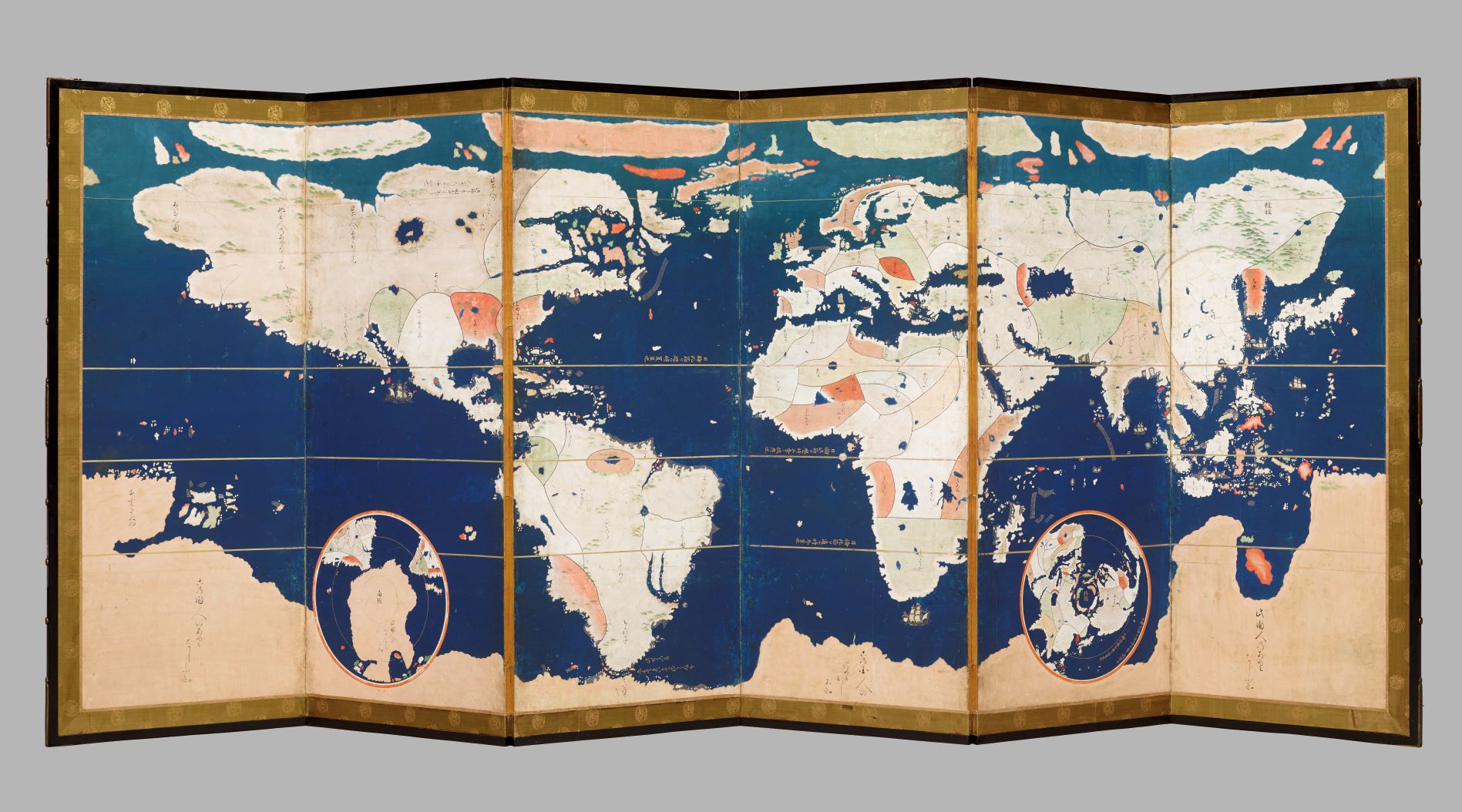
- ARAB NEWS
- 04 Jul 2025

Staff Writer
Louvre Abu Dhabi may be a pioneering cultural project, but its objective of bringing shared stories of humanity is not complete without a unique set of offerings: Japanese artworks.
The art and civilization museum has a unique collection of Japanese artworks on subjects such as the global circulation of knowledge during the pre-modern era. Here is a look at some of the unique artworks on display at the museum:
Japan and the World:


These folding screens, painted in bright colors on an indigo background, form maps more than 2.5 meters long.
They are indicative of the global circulation of knowledge during the pre-modern era, and the fact that Japan had been included in the circuit following the Portuguese and Spanish expansions into Asia and the missionary expeditions of the Jesuits.
One screen shows a planisphere, the other the Japanese archipelago. The maps injected innovation into Japanese mapmaking with their adoption of a Western vision of the world.
In so doing, they asked the universal question of the individual’s place in a world that was suddenly being opened to new horizons.
Beauty and Strength:

From the beginning of the 17th century in Japan, a period of feudal wars between different clans was followed by the 250-year reign of the Tokugawa shoguns.
While the peace that then reigned in the archipelago did not put an end to the production of armor, its function as a mark of rank and power became paramount.
The aesthetic appearance of the armor took priority over its purely utilitarian and protective role, and the makers performed veritable feats of technical prowess.
This remarkable complete suit of armor was made for Shishido Tamaki, an important figure in the Môri clan of Hagi in Nagato.
Blue Hiroshige:

Utagawa Hiroshige (1797–1858) based his views on a characteristic compositional model in which one element, in this case the tops of two trees in the bottom right, serve as a point of reference to create an effect of depth. In the distance on the right, Mount Fuji symbolically takes the place of the vanishing point.
Between the two, a flat green expanse scattered with figures devoid of relief and trees with barely suggested shadows represent the hill, which breaks off in a curving line addressed with the fukibokashi technique of subtle gradations of ink to give the landscape an atmospheric and poetic character.
At the top, the same technique is used for the sky, crowned by an almost abstract band of blue ink.
Introduced into Japan by the Dutch in 1829, Prussian (or Berlin) blue was such a hallmark of the artist’s style that he was known as Blue Hiroshige.
Armor with the Crests:

This armor is among the most beautiful and important known into collections of the Western world. It’s rare and remarkable craftsmanship uses plates of iron treated with the technique of repoussé.
Decorations are obtained by hammering out iron plates using different tools and embossing the intended design from the back.
At last, illustrations are often perfected on the front by chiseling it to refine the details. The choice of having for all the pieces a complex design combined with the use of natural iron repoussé - much difficult to obtain -, is almost a unique case and a real tour de force.
This armor, probably produced by the famous armor maker Miyata Katsusada (1654-1730), was originally owned by one of the richest and most powerful family of feudal lords (daimyo) in Japan.
Given the known production of Miyata Katsusada, this armor is undoubtedly one of his greatest masterpieces.
It will reinforce the collection of weapons and armors from the early modern period that was already counting the exceptional armor of the Shishido family (LAD.2010.013).
The great elegance of the colors selected for the silk fitting as well as the exceptional state of preservation of all different parts makes this object quite extraordinary.
Jar:

Last year, the museum organized an exhibition — “Japanese Connections: The Birth of Modern Decor” — which explored the influence of Japanese art on the development of modern decor at the turn of the 20th century.
During the exhibition, masterpieces from a pioneering group of post-impressionist artists were showcased.
This happened alongside the prints of the Japanese masters Hiroshige and Hokusai, which inspired them.
Following the opening of Japan to the West in the 1850s, artists, designers and makers across Europe became gripped by a new fashion for “Japonisme.” Some of these have also transformed into pieces of art.
On display at the “Japanese Connections” exhibition were landscapes by the great Japanese masters Utagawa Hiroshige and Katushika Hokusai.
The museum brought them together to highlight the importance of cross-cultural influence in the development of the decorative arts.
In October 2018, Louvre Abu Dhabi organized a Japan weekend presenting performances, screenings and workshops inspired by Japanese aesthetics and culture.